New signings always bring new questions to be answered and theories as to how they will fit in, but few have sparked as much tactical discussion as Jeremie Frimpong.
Frimpong’s arrival for £29.5 million from Bayer Leverkusen has led to ideas as to how Arne Slot will compensate for having such an attacking player at right-back.
The 24-year-old’s ideal position would probably be that of a right-winger in an old-fashioned 4-4-2 or a right wing-back outside a back three. You could also envision him playing as a winger in a front three, but as a right-back in a back four?
In Bayer Leverkusen’s official announcement of Frimpong’s departure, his position was described in German as ‘Flügelsprinter’, which translates literally to English as wing-sprinter.
German has many words for such roles, with subtle differences depending on the type of player (e.g. ‘Flügelflitzer’, which translates to something like wing-dasher or speedster), but sprinter is an apt description of Frimpong.
How will Liverpool accommodate such an attacking full-back in a back four?
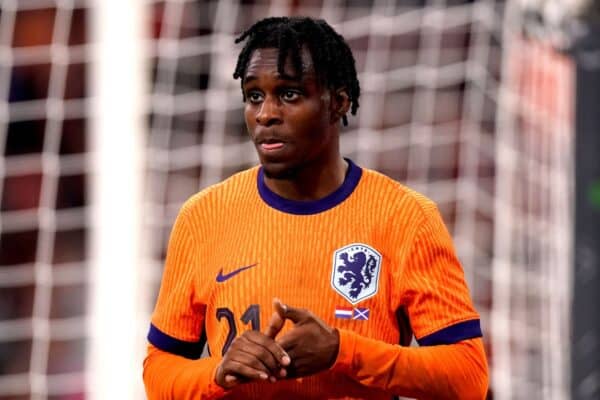
One option is to change nothing. After all, the team have already been operating with a right-back whose main responsibilities lie in attack.
Though Trent Alexander-Arnold and Frimpong are very different players, the idea that the right full-back area might need some cover during the transition from attack to defence is not a new one for Liverpool.
The attacking right flank of Alexander-Arnold and Mohamed Salah was given an insurance policy by two hard-working midfield players, Dominik Szoboszlai and Ryan Gravenberch, as well as the pace, positioning, and front-foot duelling of centre-back Ibrahima Konate.
Jurgen Klopp recently described Szoboszlai as “the best pressing player in Europe right now.”
Gravenberch, meanwhile, regularly covered around the right-back area in defence, along with Konate, who would sometimes stop attacks closer to the source with a tackle or header in midfield.
The way those two players tired towards the end of the season backed up how much they had worked throughout it, and suggests that what might be needed in 2025/26 is not necessarily a tactical change, but more trusted back-up and rotation options in existing midfield areas.
One difference between Alexander-Arnold and Frimpong is that Trent will have been more central once the ball was lost, which, in theory, allows for better defensive positioning immediately after losing possession.
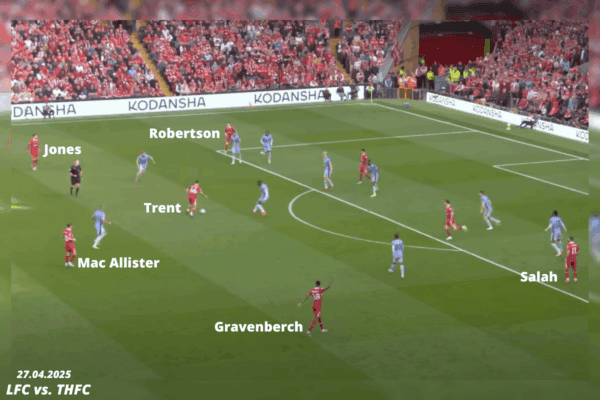
Frimpong, on the other hand, will likely be wider or further forward, leaving him out of the game for that important initial transition moment.
One thing Frimpong has over Alexander-Arnold, though, is recovery pace, and he could be back in a position to defend much quicker than his predecessor – the No. 66 was often easily bypassed in those central areas.
There is a lot of talk about this new, buccaneering right-back altering the way Liverpool play, but they could easily keep things the way they are.
Though the departed and the arrival are different in style, Liverpool are still replacing one right-back who is not really a right-back with another right-back who is not really a right-back.
How the midfield can adapt
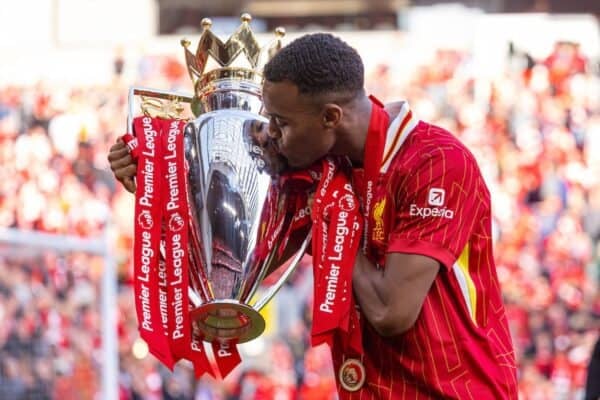
The midfield dynamic is something that could change with the new arrivals, especially if Florian Wirtz is added to the team. Szoboszlai has the ability to play as a No. 8 and has indicated he would enjoy doing so.
This brings us to the other option, which is something that was seen in bursts towards the end of the 2024/25 season once the title was won, when Wataru Endo or Gravenberch dropped closer to and almost between the centre-backs in possession, forming a back three of sorts.
This was especially noticeable in the game against Brighton, when Szoboszlai’s role also changed to that of a No. 8 on the left, rather than his usual advanced role on the right.
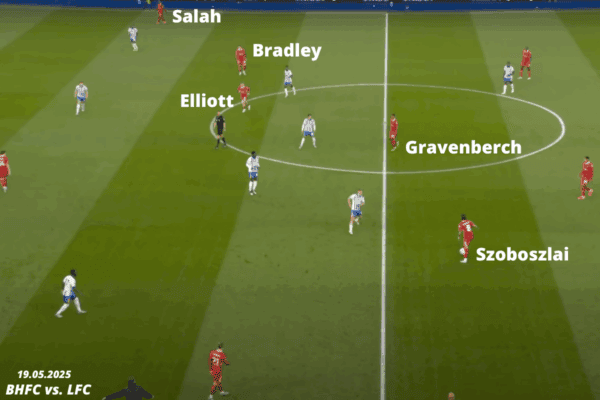
A back three in possession can also be formed by one of the full-backs hanging back and acting as a wide centre-back on one side, as Andy Robertson did on occasions during Klopp’s final season, but prospective new left-back Milos Kerkez is unlikely to remain deep.
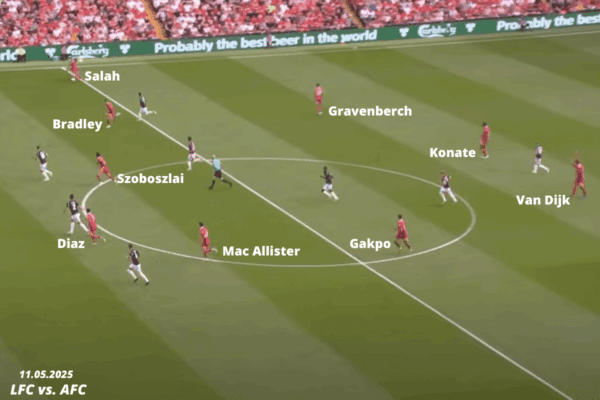
Instead, Gravenberch would likely be the one to drop between the two centre-backs, in a classic continental 4-3-3 formation with a 1-2 lineup in midfield using a regista-like playmaker.
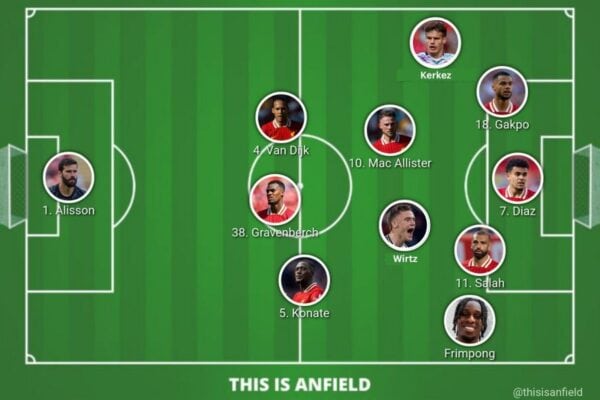
A risk of creating problems rather than solving them
One issue with this setup could be the lack of deeper build-up options on the right.
Frimpong is used to flying up the right flank into the final third, underlapping, overlapping, roaming free and is most effective when getting on the end of things, stretching the defence in the opposition half rather than getting bogged down in build-up play.
He has the potential to link well with Salah in advanced areas – or even deputise for Salah on occasion – offering the speed and ability to beat players Salah once had, while also complementing the Egyptian’s increased creative output by being an additional option for through balls.
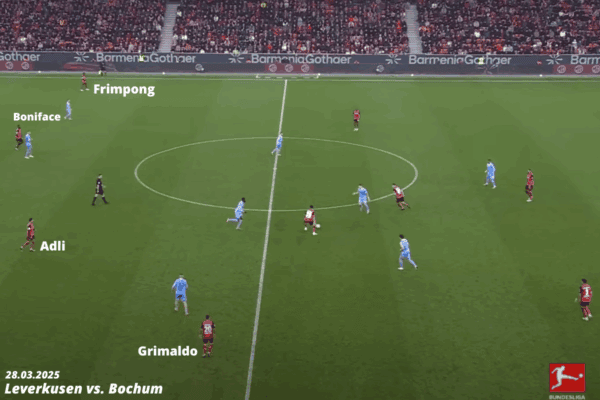
But where will the right-sided build-up come from when there is only one deep-lying midfielder and the right-back is bombing forward?
It could come from Szoboszlai dropping deeper, but it would give the Hungarian even more work to do. Against Brighton, when this kind of 4-1-2-3 setup was tested, Slot retained the more attacking right midfielder with Harvey Elliott playing that role normally occupied by Szoboszlai.
Keeping the double pivot of Gravenberch and Alexis Mac Allister might be a better option than switching to one deep-lying midfielder, but at least the option is there to try something different when needed.
Options and versatility
During transfer season, there tends to be a fixation with looking at a single best XI rather than the reality of a 25-man squad.
Where will all these players fit? There are more than 11 good ones!
It is a good problem to have. Liverpool need more depth and rotation options than they had in the past season as well as more players whom the manager trusts.
New signings, especially versatile ones, can have a positive knock-on effect in other areas.
Frimpong’s arrival could mean changes for the rest of the team and altered dynamics in midfield and defence, but it doesn’t need to.


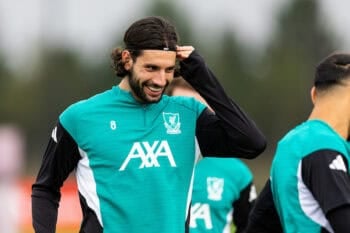


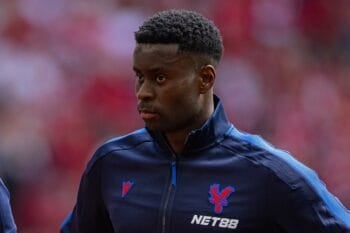

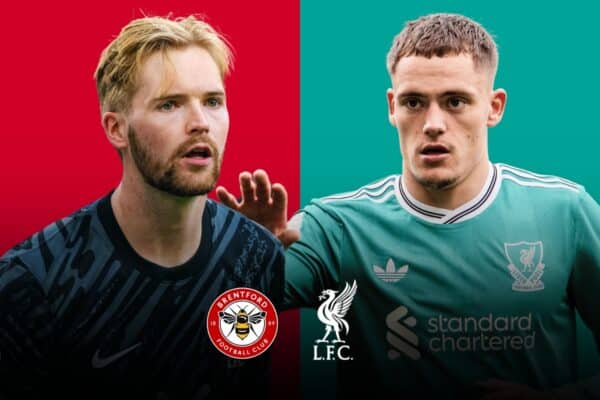


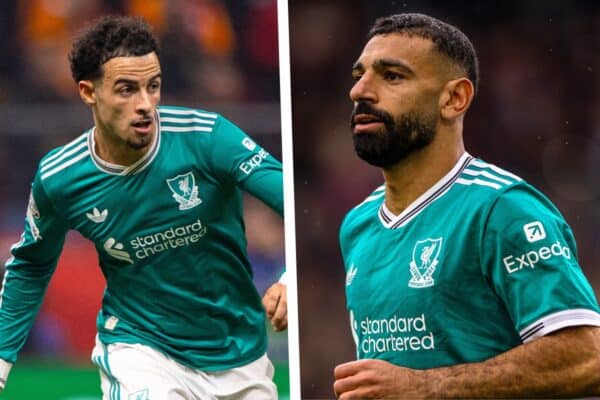


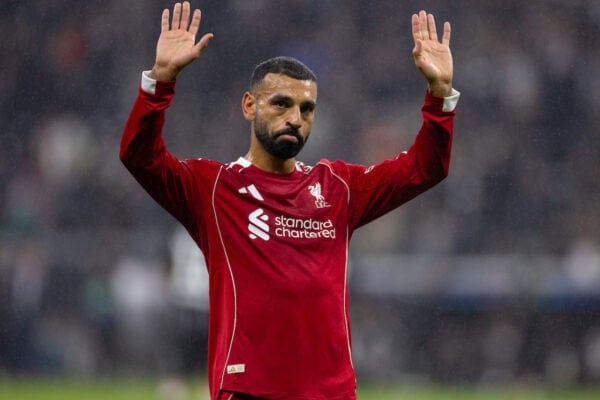
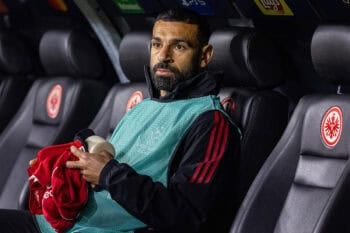




Fan Comments